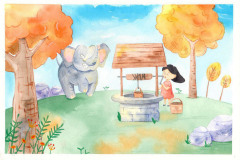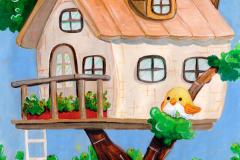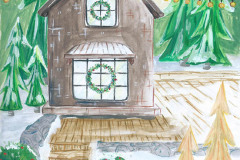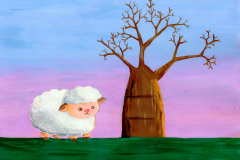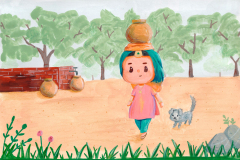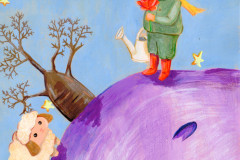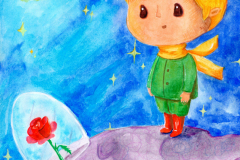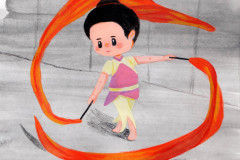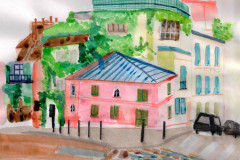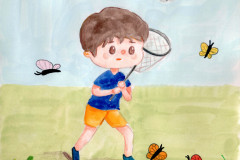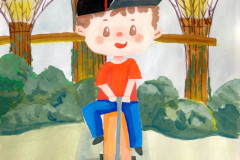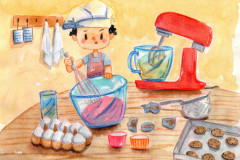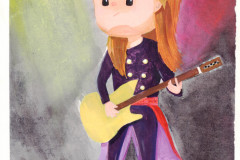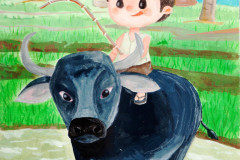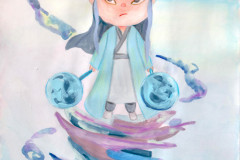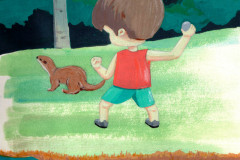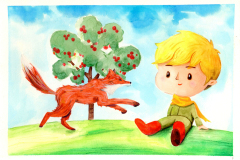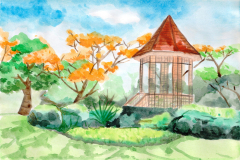Introduction
Mother Earth represents the life-giving and nurturing aspects of our planet. Artists often use this theme to highlight the connection between humans and nature. By combining different materials and techniques, they create mixed media art that celebrates the world and its environment. This type of art allows creative expressions that inspire respect, care, and awareness for the Earth.
In this article, you will learn how Mother Earth art is made using mixed media. We will explore the meaning behind the imagery, the materials artists use, and the impact of this art form on our understanding of nature. This will help you appreciate the role of art in protecting the environment.
Understanding the Concept of Mother Earth
Mother Earth in Mythology and Culture
Mother Earth often appears as a central figure across many cultures, seen as the source of life and nurturing force behind all living beings. In Greek mythology, Gaia is the personification of Earth, the origin of the gods and the creator of life. Similarly, in many Indigenous traditions, Mother Earth is revered as a sacred entity that supports human existence and guides natural cycles.
She is more than just land or soil. She’s a symbol of fertility, growth, and rebirth, carrying a deeply spiritual role that’s sometimes hard to fully grasp. Stories about her place humans in a constant relationship with nature, something that feels especially relevant today.
- In Hinduism, Bhumi is the earth goddess who sustains living creatures and is often depicted as a mother figure.
- For the Inca, Pachamama represents the earth and fertility, influencing harvests and well-being.
- Many African cultures have earth deities tied to agricultural cycles and the balance of life.
These stories do more than explain the natural world. They remind us that Earth isn’t just a backdrop for life but a living, breathing part of cultural identity.
The Role of Mother Earth in Art
Artists have long used Mother Earth to express ideas about nature, protection, and life’s fragility. She offers a powerful visual anchor, often portrayed with elements like soil, plants, animals, or water, symbols carrying layers of meaning about growth and decay.
Choosing Mother Earth as a subject allows artists to explore environmental themes in a deeply personal way. Sometimes the artwork is a celebration of nature’s beauty; other times, it questions humanity’s impact or pleads for preservation. The figure can be both comforting and unsettling—reminding us how close we are to destruction while also offering hope.
When you see a piece that captures Mother Earth, what strikes me is how visible the human connection to the environment becomes. It’s not just decoration or metaphor; it’s a statement about belonging and responsibility. Artists play with mixed materials to reflect this complexity, layering elements to echo the richness and vulnerability of the natural world itself.
Introduction to Mixed Media Art
What is Mixed Media Art
Mixed media art simply means creating artwork by combining different materials and techniques in a single piece. It’s not limited to paint and canvas, but might include things like fabric, paper, wood, found objects, and even digital elements. For example, you could have a painting enhanced with collaged newspaper clippings, or a sculpture that incorporates metal and organic matter like leaves or soil.
Unlike traditional single-medium art, mixed media encourages experimentation and layering. It gives artists the freedom to express complex ideas and textures that might be hard to achieve otherwise. You can see where paint overlaps with threads or where sketches merge into scraps glued on a board. That mix creates a depth and unpredictable quality that feels alive.
The History of Mixed Media Art
The roots of mixed media go far back. Picasso and Braque first introduced collage into fine art in the early 20th century—cutting up newspapers and combining those with paint changed how art could be made. Later, artists like Robert Rauschenberg embraced assemblage, blending everyday objects with traditional materials.
Since then, mixed media has grown beyond any strict definition, reflecting changing times and tools. It’s tempting to see it as something modern or trendy, but its history shows a steady push toward breaking boundaries. That’s why looking at mixed media in Mother Earth art feels natural—both seek to connect, layer, and capture complexity in fresh ways.
Why Use Mixed Media for Mother Earth Art
You might wonder why mixed media feels especially fitting when creating art about Mother Earth. I think it’s because nature itself isn’t uniform—it’s raw, layered, and complex. Using different materials lets artists mirror that complexity in ways a single medium can’t quite capture.
Think about it: paper, cloth, paint, and found objects each bring something unique. Each element can reflect different parts of nature, from the softness of moss to the roughness of bark. This variety helps express the many facets of Earth without forcing it into one flat, uniform style.
Plus, layering materials doesn’t just add visual interest—it creates real texture and depth. When you build a piece by combining materials, the artwork feels alive. It invites you to look closer, to sense the natural world’s surfaces and spaces. Sometimes, a simple brushstroke feels too smooth, too neat. Mixed media fixes that by letting artists add bumps, cracks, and even unexpected surprises.
- Using mixed media allows artists to echo nature’s diversity through varied materials.
- Different textures, from rough to smooth, emerge when layering elements.
- Physical depth makes the art’s themes more immediate and tangible.
Does the way materials physically interact make the artwork more honest or just messier? That’s up for you to decide. But for many artists, mixed media offers a balance between control and chance—much like the unpredictable Earth itself.
Common Materials Used in Mother Earth Mixed Media Art
Natural Materials in Art
Many artists turn to natural materials like leaves, wood, soil, and stones when creating Mother Earth mixed media pieces. These elements bring a direct connection to nature, making the artwork feel more grounded—though sometimes fragile or unpredictable.
Leaves, with their delicate veins and varying textures, add an organic pattern impossible to replicate by hand. Wood pieces or bark introduce rugged textures and warm tones, often used as a backdrop or frame within the composition. Soil can be tricky—difficult to bind but adds real earthiness and depth when mixed with paint or resin. Stones or pebbles create three-dimensional accents that invite touch and exploration.
You might wonder, does nature’s impermanence clash with the intention of lasting art? Some artists rather embrace this tension. Their works change over time, reminding us of cycles and fragility.
Artificial and Found Objects
Man-made items and found objects often feature alongside natural materials. Old keys, scraps of metal, fabric bits, or recycled paper—these can hold personal or environmental significance. Using such objects adds layers of meaning and questions about waste, reuse, and memory.
Incorporating these items challenges strict definitions of what belongs in “nature art.” But this tension is useful. It makes you, as an observer or creator, pause and reflect on human impact and responsibility. Sometimes, the contrast between natural and artificial sparks more curiosity than a purely organic piece.
Found objects also contribute to sustainability by giving new life to discarded items. That act itself—choosing to reuse rather than discard—becomes part of the artwork’s story.
Techniques for Creating Mother Earth Mixed Media Art
Layering and Collage Techniques
When working with Mother Earth themes, layering different materials can really bring depth and meaning to your piece. Start by selecting various papers and fabrics—thoughtfully chosen textures always add more interest. You might begin with a base layer of handmade paper or burlap, something earthy. Then, add torn or cut pieces of maps, leaves, or recycled book pages. Overlapping these elements creates a natural complexity, but don’t overdo it; some spaces need breathing room.
Use glue or gel mediums to fix each layer, pressing down carefully to avoid bubbles or wrinkles. Play with transparency too—that’s what gives collages their living edge. I’ve found that combining rough fabric with thin tissue paper, for example, can suggest the contrast between earth’s solidity and fragility. Don’t hesitate to experiment, maybe even let a few pieces hang off the edge or curl slightly. It keeps the whole composition feeling more organic and less rigid.
Adding Paints and Textures
After your collage base is set, introducing paint and textures can unify the image and evoke more emotion. I like to use acrylics or inks applied thinly at first—just enough to tint areas without covering the collage underneath. You can dab paint with sponges or brushes to create shadows or highlights, blending layers into one visual flow.
Try adding texture with thick gels, modeling paste, or even sand mixed into paint. These build tactile surfaces that invite touch or closer inspection. Applying washes of diluted ink or watercolor can add subtle color shifts. Occasionally, I pause and let some areas dry before adding more layers. It’s a bit unpredictable but sometimes the unevenness enhances the feeling of earth’s irregular surface.
Think about contrast: smooth paint next to rough fabric, gloss against matte paper. Sometimes leaving raw edges visible adds honesty to your work, reflecting nature’s imperfections. Does your piece tell a story of renewal, decay, or growth? Textures and paint can emphasize those ideas in ways plain collage can’t quite reach. It’s a bit like listening carefully to the materials themselves and responding with your brush or palette knife.
Symbolism and Imagery in Mother Earth Art
Flora and Fauna Symbols
Plants and animals appear frequently in Mother Earth art, often carrying more than just their literal forms. For many artists, a tree isn’t just a tree—it represents life’s persistence, roots grounding us in history, or sometimes growth pushing endlessly toward change. Flowers might show beauty, fragility, or cycles of renewal, while animals often embody various traits. Birds can symbolize freedom or the connection between earth and sky, fish hint at fertility and water’s flow, and insects remind us of persistence despite small size.
I’ve noticed that some artists lean heavily into specific animals tied to their cultural background. It makes you wonder, what do these choices say about our relationship with nature, and how much of this symbolism resonates universally? The meaning might shift depending on who’s creating the work and who’s viewing it. It’s rarely fixed, which is part of what makes this art so engaging.
Earth and Nature Elements
Soil, water, sky—these features show up again and again, and each piece can emphasize a different aspect of Earth’s vitality. Soil often signifies the foundation, the fertile source of growth. It feels weighty, grounding art to the planet itself. Water might be portrayed through flowing lines, textures, or layers, emphasizing movement and change—and, sometimes, healing or purification. The sky is a bit tricky; it can express vastness, mystery, or even climate shifts.
Artists often use these elements not only as backgrounds but as active symbols. Maybe a textured patch of dirt made from actual earth; or thin washes of blue replicating water’s fluidity; or even translucent layers suggesting shifting clouds. These ways of showing nature create something that’s tactile, sometimes rough, sometimes delicate. It’s a reminder that Earth is constantly in motion, alive in ways beyond simple depiction. You might catch yourself wondering, does this art make you feel more connected, or does it expose how much we take for granted? The ambiguity pulls you in.
Famous Artists Who Use Mixed Media for Environmental Themes
When it comes to mixed media art that reflects on Mother Earth and environmental concerns, a few names often come up. I think some artists really capture the complexity of nature through their layered and textured works. Take Joseph Cornell, for instance—though not always directly environmental, his shadow boxes combined found objects in a way that inspired many to think of space and natural history differently. His method paved the way for artists to borrow from the world around them, to build narratives that question our relationship with the environment.
In those early experiments, you can see the seed of what ecological mixed media art would become. Artists like Robert Rauschenberg incorporated discarded materials, blending everyday items into his art, which—whether intentionally or not—made viewers confront waste and consumption. This impulse to use real materials drawn from the environment or its detritus is crucial. It’s like the art carries a physical part of the Earth itself.
Moving to contemporary artists, there’s someone like Mandy Barker, who’s gained attention by assembling plastic debris collected from oceans into striking collages and installations. Her work doesn’t just show pollution; it almost hypnotizes you with patterns and colors—making it hard to look away. Or Damien Hirst, who blends natural specimens with artificial elements, sometimes sparking mixed feelings about mortality and human impact on the planet.
You might want to look closely at Lisa Kokin, too—her work often incorporates vibrant textiles and natural dyeing methods, reasserting a connection with nature’s processes. And then there’s El Anatsui, whose bottle-cap sculptures resemble massive tapestries, quietly commenting on consumption and waste, while simultaneously honoring cultural heritage.
What sticks with me is how these artists don’t just illustrate Mother Earth; they bring fragments of it into the gallery spaces, forcing viewers to reckon not only visually but physically with the environment. It makes you wonder—how much can art move beyond beauty to spark real reflection?
How Mother Earth Mixed Media Art Raises Environmental Awareness
Visual Storytelling and Connection
Mother Earth mixed media art often tells stories that words alone can’t capture. It brings environmental issues closer to us through visible, tangible forms. When you see a piece made from recycled materials or natural elements, you might feel something—maybe a bit of unease or wonder. That emotional pull can be stronger than facts or figures. It’s like the art becomes a quiet conversation with your feelings, nudging you to think about the planet differently.
For instance, combining soil, leaves, and found objects in one artwork makes the threats to nature more immediate. It’s something you can almost touch. The layered textures and contrasts in these pieces invite viewers to pause and absorb the subtle messages embedded in them. Those moments often spark a personal connection to the Earth that’s not just intellectual but deeply felt.
Encouraging Participation and Responsibility
What’s powerful about Mother Earth mixed media art is how it motivates actions—small or big. When people watch art made from things tossed away or forgotten, it raises questions. What could I do differently? Could I reuse or recycle more? Or maybe, how can I reduce waste in my daily life? Art like this doesn’t just preach; it invites participation.
Sometimes, these artworks appear in community spaces or workshops where viewers can even contribute parts of their own materials or stories. That act alone fosters responsibility—it’s no longer just about looking but also about being involved. You might leave with a sense that protecting nature isn’t someone else’s job but yours too. Mixed media art opens a subtle doorway from awareness to action, even if it’s just planting a tree or choosing eco-friendly products.
Creating Your Own Mother Earth Mixed Media Art
Gathering Materials and Inspiration
Start by looking around you—nature offers countless treasures. Leaves, twigs, pebbles, and even dried flowers can form the foundation of your piece. Don’t overlook everyday items either: scraps of fabric, old newspapers, or worn-out buttons add texture and meaning. Sometimes, the best materials are those we barely notice.
When choosing what to use, think about what speaks to you personally. Does a certain leaf remind you of a place or memory? Maybe a thread of cotton evokes warmth or fragility. Inspiration doesn’t have to be grand; often, it’s these small, quiet connections that fuel creativity.
Basic Techniques for Beginners
Start layering slowly. Lay down a base—perhaps paint or glued paper—and then build up with natural elements. Don’t rush; each layer changes how the piece feels. Try mixing paints with textured surfaces, or gently brushing acrylic over a leaf to keep its detail visible.
When assembling, simple glue or gel mediums usually work fine. Press items firmly but avoid crushing delicate parts. Sometimes, overlapping materials can suggest depth or movement, but keep in mind that too much can clutter your work.
Playing with these materials teaches you what sticks, what breaks, and what surprises you. Remember, there’s no perfect formula—just your evolving process. Give yourself permission to experiment, pause, or even start over. What matters most is that your art grows from a genuine place.
Conclusions
Mother Earth art in mixed media invites you to see the planet in new ways. This form blends different materials to create rich visuals that tell stories about nature’s importance. It helps you understand how we depend on the Earth and why we should protect it. By engaging with this art, you feel connected and responsible for the environment.
Through learning about the symbols and techniques in Mother Earth mixed media art, you gain ideas on how to create your own pieces. This creative process can deepen your relationship with nature and encourage others to act kindly toward our world. Embracing art as a tool for environmental awareness offers hope for a better future.



















